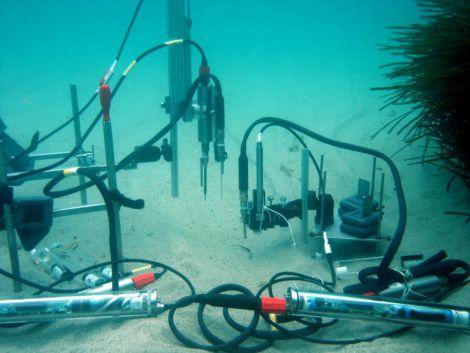ECO2 - Sub-seabed CO2 Storage: Impact on Marine Ecosystems
Researchers at CGB are participating in the EU project ECO2.
Main content
The project aims to establish a framework of best environmental practices to guide the management of offshore CO2 injection and storage. The work will form part of the EU directive on "Geological Storage of CO2" for the marine realm. As such it includes the quantitative assessment of potential and actual impacts on marine ecosystems at a CO2 injection facility and the entire storage site.
Project participants plan to develop a comprehensive monitoring concept for storage sites comprising innovative techniques that are capable of detecting different modes and levels of leakage including that of CO2 pre-cursors. Field studies at currently operated and prospective sites (Sleipner, Snøhvit) and natural CO2 seeps (North Sea, Mediterranean Sea) will be complimented by lab experiments and numerical simulations undertaken on different scales.
To investigate the likelihood of leakage from sub-seabed storage sites
To study the potential effects of leakage on benthic organisms and marine ecosystems
To assess the risks of sub-seabed carbon storage
To develop a comprehensive monitoring strategy using cutting-edge monitoring techniques
To define guidelines for the best environmental practices in implementation and management of sub-seabed storage sites
Natural CO2 seepage will be studied in ECO2 as analogues for CO2 leakage. A number of key processes controlling leakage pathways and impacts on biota will be studied in situ by including natural analogue sites as additional study sites. Moreover, natural analogues will serve as test beds for the development of high-end monitoring techniques. Volcanic CO2 seeps have been studied in detail by ECO2 partners in recent years. One of CGB’s natural laboratories, the Jan Mayen gas vents located at ~700 m water depth in the North Atlantic, will play an important role.
Investigated CO2 Storage sites
CGB researchers also have access to 2 operational CO2 storage sites. Sleipner (North Sea) has been in operation since 1996 by Statoil. Snøhvit receives ~0.7 Million tons of CO2 per year and has been in operation since late 2008.
Pamphlets about the project are available at the CGB office. More information is available on the project web site.
